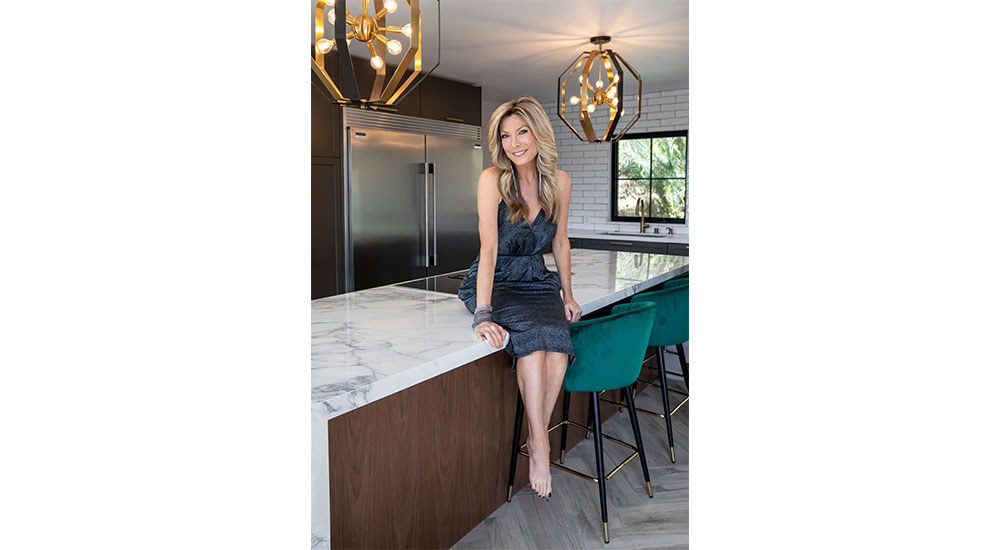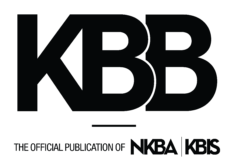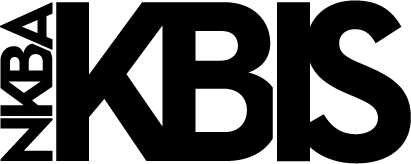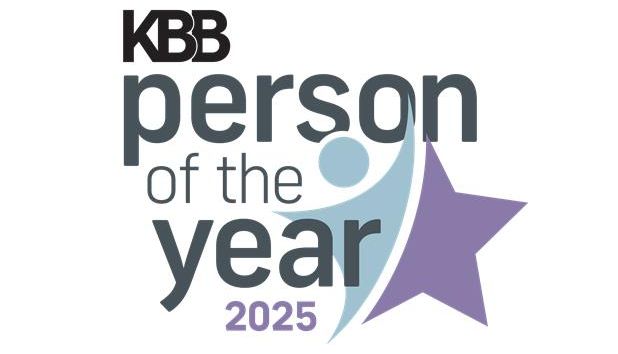Jennifer Farrell talks with KBB about bridging her work in television and interior design.
How does your background influence how you approach the design business?
Jennifer Farrell: My background is a bit unusual, in that I’ve spent my entire career life traversing two industries: design and entertainment. In my early days, I was a film producer, and that job forces you to develop a distinct skill of multitasking while keeping a lot of plates spinning.
When you’re producing a film, you learn how to simultaneously negotiate a multimillion dollar contract while wrangling the director so you don’t inadvertently shoot 15 minutes into the union lunch break, while making sure craft services has the exact soy milk the costar of your film likes, so the actor doesn’t get cranky and refuse to show up on set (which has actually happened). The learning lesson from that chapter of my life was that if I want to be the ringmaster, it’s my job to keep my supporting teams supported, by keeping their roles compartmentalized and focused on the task at hand. I have a design team, a marketing team and a licensing team. Their roles are very distinct, and have very little overlap. It’s my job to see the big picture and how all the teams fit together, how all of their contributions fuel one huge machine. But I can’t expect all those team members to understand the inner workings of everyone else’s jobs – that would dilute their focus on performance in their critical roles.
What has been your biggest challenge in the design business – and how did you overcome it?
Jennifer Farrell: Ironically, my biggest challenge in the design industry has been my own success on-camera. I opened my design firm, Jennifer Farrell Designs, in 2001. By 2003, I had my first TV series as an on-camera designer and personality. Hosting television shows gave me incredible opportunities in the licensing world; I had my first mass-market product collection in 1,400 stores by 2007. But even though I had a thriving interior design business, the luxury design industry took a long time to not pigeonhole me as “that TV girl.” This is a conversation I’ve had with several other celebrity designers who have had successful television careers – there tends to be an assumption that you’re either a television personality, or a legitimate designer, but not both. The moment I was able to start overcoming that challenge was in 2018, when one of my projects was selected for the Dwell on Design Home Tour, and I was also asked to be the guest designer for the Dwell on Design Method Home. My Diablo Ranch project was alongside those of industry icons like Marmol Radziner, and that started shifting industry perception of where I fit into the luxury design community. Jonathan Adler was instrumental in that shift (although I’m not sure I’ve ever properly thanked him for that) because he was coming through my Method Home design with scores of press and influencers, supporting my work and giving me praise. I really should take him out to coffee for that one.
What is the most important career lesson you’ve learned?
Jennifer Farrell: Be generous with your time, but selective with whom you give it to. Time is our most valuable asset, and the amount we have of it is finite. So use it wisely, and don’t waste it – because each moment can have impact. Whether it’s two minutes of focused attention on a design fan who wants to meet you, or an hour of supporting a friend at a speaking engagement, that generosity of time affects the person you’re sharing it with, and that effort will come back to you in spades.
What advice would you give someone entering the design business?
Jennifer Farrell: My best advice (not just for new designers, but for all designers) is to get to the trade shows and markets in all sectors: furnishings, kitchen + bath, lighting, and incredibly important – the surfaces world. I say it quite often: you can’t put a sofa in a room without the room. That room has walls and a floor and a ceiling that provide the canvas for your designs, and you need to understand those materials, how they’re made, where they come from, how they’re installed. Go to shows like Coverings. Attend every talk and lecture you possibly can, on topics that may not be your forte – installation, trends, business practices. Go to the shows and become a sponge, because the amount of knowledge you can gain in a few days with an experience like Coverings or High Point or IBS or KBIS is like attending a year of grad school.
How has your experience in television shaped your design practice?
Jennifer Farrell: Filming television shows had an unexpected consequence on my design practice: a very early transition to the virtual office. In the beginning, my company operated with the classic model of everyone driving into one office, standing by the water cooler, and losing valuable productivity time while wasting hours each day driving back-and-forth. But when I would have to leave town to film a show, the productivity would pretty much grind to a halt. So in 2009 when the economy crashed, it was a blessing in disguise for my business, as there was a new idea coming out of Europe for a “virtual office.” It was a revolutionary concept at the time, but we gave it a try and never looked back. Productivity, time management and job satisfaction all improved dramatically. Then when the pandemic hit and most businesses were scrambling to figure out how the virtual office would work, we’d already been operating that way for over a decade – so my team felt right at home, being at home.









